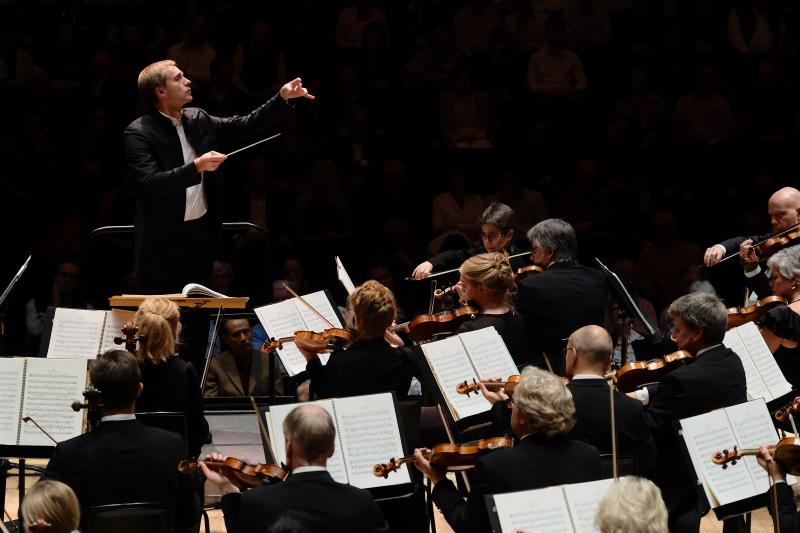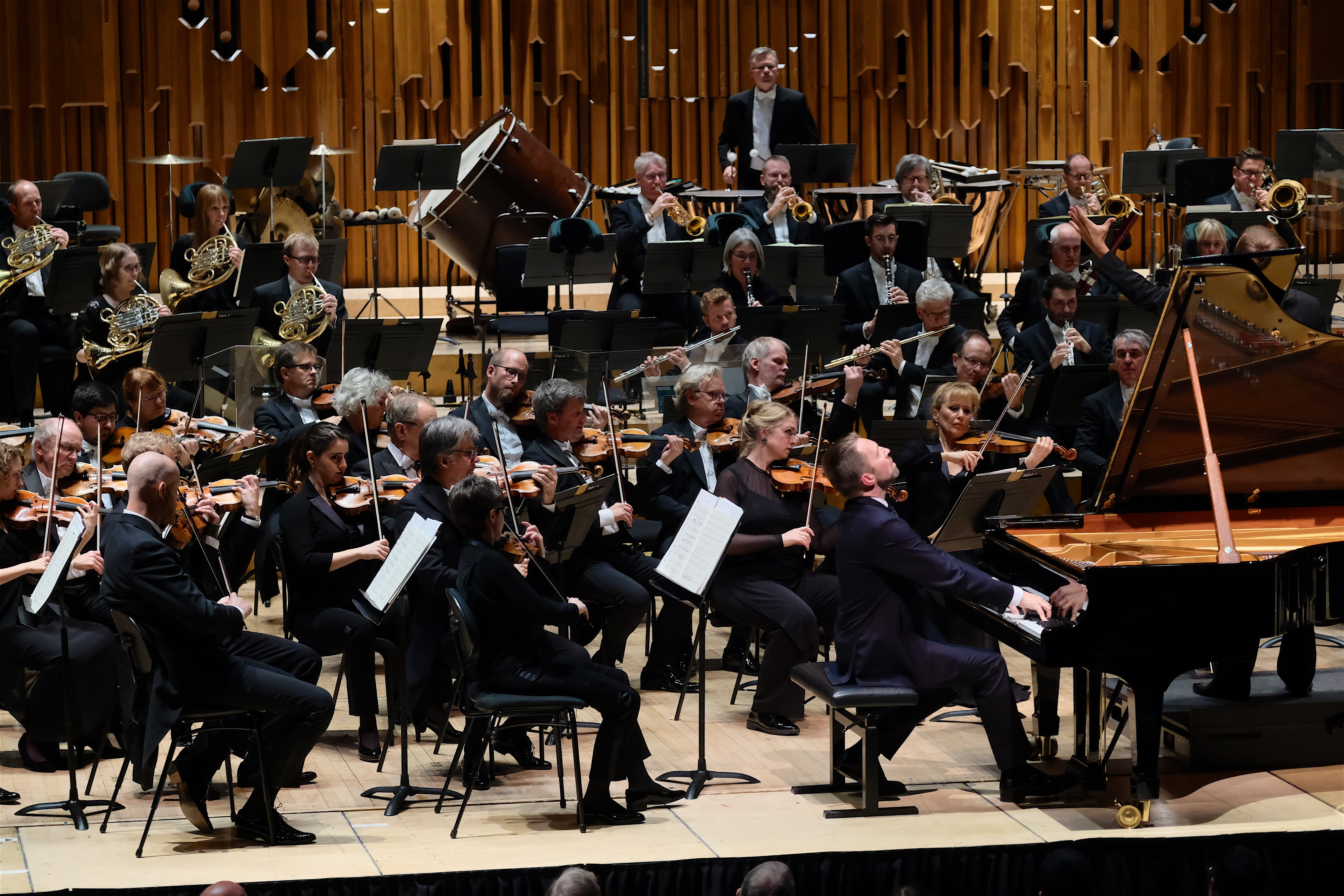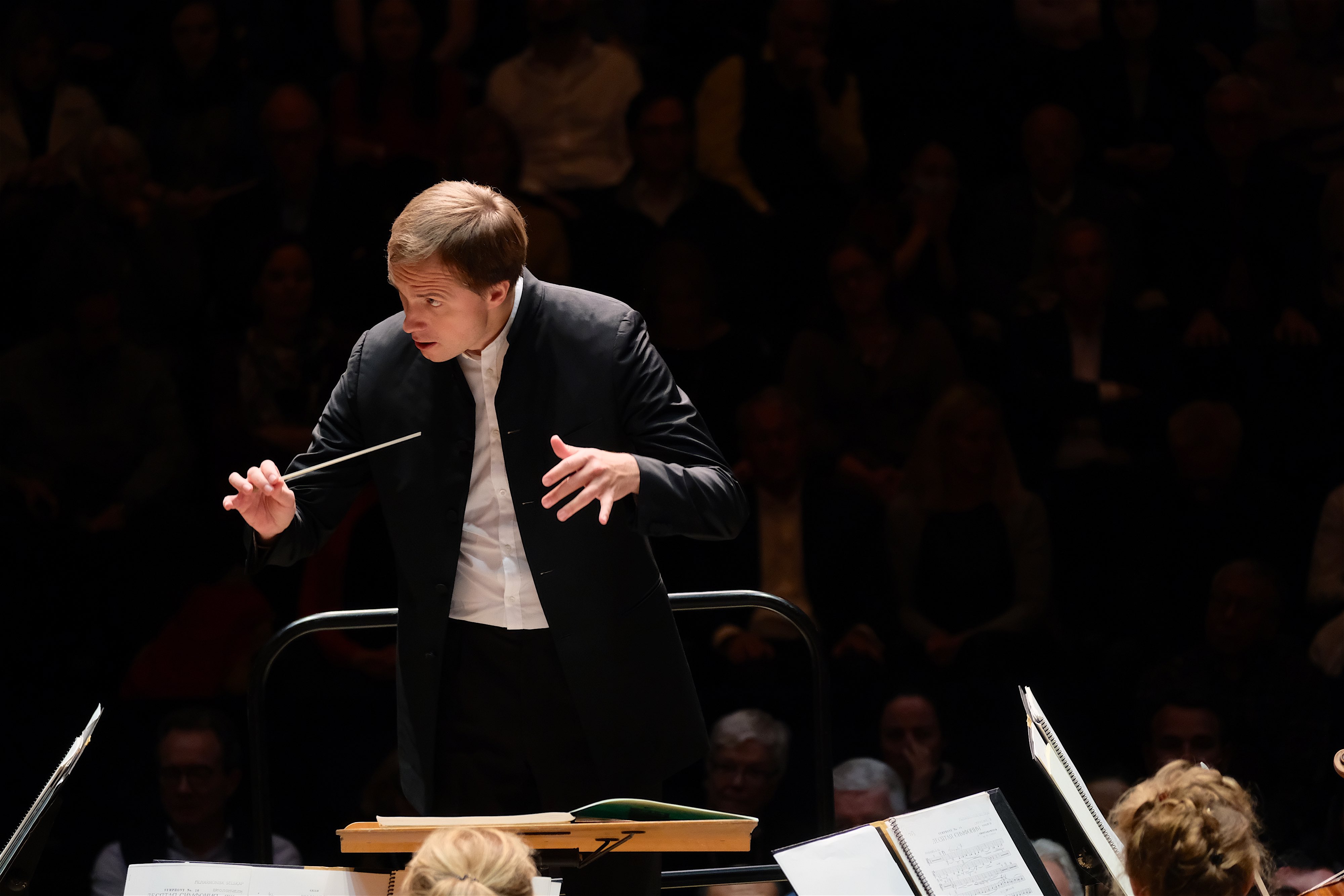Andsnes, Oslo Philharmonic, Petrenko, Barbican review – polish and passion | reviews, news & interviews
Andsnes, Oslo Philharmonic, Petrenko, Barbican review – polish and passion
Andsnes, Oslo Philharmonic, Petrenko, Barbican review – polish and passion
A centenary showcase for one of Europe's greatest orchestras

The Oslo Philharmonic finished its centenary tour of Europe at the Barbican last night with ample proof that it consistently delivers one of the continent’s most well-rounded, and richly satisfying, orchestral sounds. The Norwegians’ modern history may date to 1919, but their stellar reputation only emerged in the 1980s. Then Mariss Jansons, just like Simon Rattle over in Birmingham, shaped a supposedly “provincial” outfit into a regiment of world-beaters.
Even though it has become one of the band’s signature pieces under Petrenko, the Shostakovich still felt like an ambitious choice after a first half of birthday favourites. Strauss’s Don Juan, the opener, had both passion and polish, the strings sexy or languid, the brass punchy and the oboe solo (David F Strunck) gloriously lovelorn. Inger Besserudhagen’s horns, quite superb all night, rose with muscular assurance to their big theme, while Petrenko engineered the culminating shock of the seducer’s death (in a duel, since Strauss follows Lenau’s narrative not Mozart’s) with thrilling ferocity.
 Grieg’s Piano Concerto followed: one of works played at the Philharmonic’s first concert, and still such a Norwegian icon that it can be hard to hear the sheer, ebullient originality that drives its torrent of melodic invention. Another, younger mainstay of Norwegian music, Leif Ove Andsnes (pictured above), performed it with a magisterial aplomb. He switched our attention from the grand romantic gestures to the shape and movement of the whole. Majestic more than impassioned, with measured tempi and a sense of infallible command, Petrenko and Andsnes seemed to downplay the exuberant decoration of the piece in favour of its architectural weight. Around the solo part many orchestral voices sang, from the cellos (led by Louisa Tuck) to the trumpets (Jonas Haltia). Andsnes made the cadenza a monumental journey, but his mountainous authority softened gorgeously in a rippling, otherworldly adagio. This was not so much folksy, homespun and spontaneous Grieg as the work of a young master with fine classical bones: an assertion of European dignity and seriousness in keeping with this orchestra’s century of achievement. Andsnes’s encore, the Peasant March from Grieg’s Lyric Pieces, felt similarly refined and restrained – a long way from a simple country stomp.
Grieg’s Piano Concerto followed: one of works played at the Philharmonic’s first concert, and still such a Norwegian icon that it can be hard to hear the sheer, ebullient originality that drives its torrent of melodic invention. Another, younger mainstay of Norwegian music, Leif Ove Andsnes (pictured above), performed it with a magisterial aplomb. He switched our attention from the grand romantic gestures to the shape and movement of the whole. Majestic more than impassioned, with measured tempi and a sense of infallible command, Petrenko and Andsnes seemed to downplay the exuberant decoration of the piece in favour of its architectural weight. Around the solo part many orchestral voices sang, from the cellos (led by Louisa Tuck) to the trumpets (Jonas Haltia). Andsnes made the cadenza a monumental journey, but his mountainous authority softened gorgeously in a rippling, otherworldly adagio. This was not so much folksy, homespun and spontaneous Grieg as the work of a young master with fine classical bones: an assertion of European dignity and seriousness in keeping with this orchestra’s century of achievement. Andsnes’s encore, the Peasant March from Grieg’s Lyric Pieces, felt similarly refined and restrained – a long way from a simple country stomp.
Shostakovich completed his Tenth Symphony in the wake of Stalin’s death, and debate has swirled ever since around its mysteries. How does the work balance the personal and the political, the memory of the monster who plagued the composer’s life with the private yearnings, and strictly musical dramas, of its drawn-out development? Here the firmness and transparency of every department in the Oslo band allowed the complex narrative of the symphony to unfold with admirable fluency and cogency. Petrenko always makes us hear and understand Shostakovich’s direction of travel, even in the long, brooding Moderato of the first movement, which can meander and digress in other hands. As we edged towards its slow-burning climax, the woodwind solos delighted in their sombre and plaintive loneliness, ending with the unearthly farewell from flutes and piccolos. The eloquent clarinets (led by Leif Arne Pedersen) and bassoons (Per Hannisdal) often anchored our troubled journey through the work. Their halting dances resumed in the third movement after the extraordinary, almost hysterical scherzo that (supposedly) depicts the departed ogre, Stalin himself. Petrenko made this gallop through the Gulag – if it is that – snatch the very breath from our lungs.
 The third movement braids motifs that are meant to represent the composer himself and his (unrequited) love, Elmira Nazirova. This sort of extra-musical storytelling need not matter in the slightest to an audience when, as with this orchestra, the dialogue between instruments fashions a self-sufficient drama that calls for no footnotes. As the eerie lone horn answered the questing woodwinds, Petrenko’s pacing underlined the forlorn isolation of each voice with a finesse that made romantic glosses pretty irrelevant. And leader Elise Båtnes made yet another of her wistfully memorable contributions to the mood. With its unsettling blend of exuberance and panic, the finale sounds as ambiguous – even unresolved – as the rest of this mighty, troubled work. The strength-in-depth of their Shostakovich – sometimes raucous, sometimes subtle but always fiercely disciplined – confirms that this world-ranking orchestra never succumbs to complacency, even at their own birthday bash.
The third movement braids motifs that are meant to represent the composer himself and his (unrequited) love, Elmira Nazirova. This sort of extra-musical storytelling need not matter in the slightest to an audience when, as with this orchestra, the dialogue between instruments fashions a self-sufficient drama that calls for no footnotes. As the eerie lone horn answered the questing woodwinds, Petrenko’s pacing underlined the forlorn isolation of each voice with a finesse that made romantic glosses pretty irrelevant. And leader Elise Båtnes made yet another of her wistfully memorable contributions to the mood. With its unsettling blend of exuberance and panic, the finale sounds as ambiguous – even unresolved – as the rest of this mighty, troubled work. The strength-in-depth of their Shostakovich – sometimes raucous, sometimes subtle but always fiercely disciplined – confirms that this world-ranking orchestra never succumbs to complacency, even at their own birthday bash.
The future of Arts Journalism
You can stop theartsdesk.com closing!
We urgently need financing to survive. Our fundraising drive has thus far raised £49,000 but we need to reach £100,000 or we will be forced to close. Please contribute here: https://gofund.me/c3f6033d
And if you can forward this information to anyone who might assist, we’d be grateful.

Subscribe to theartsdesk.com
Thank you for continuing to read our work on theartsdesk.com. For unlimited access to every article in its entirety, including our archive of more than 15,000 pieces, we're asking for £5 per month or £40 per year. We feel it's a very good deal, and hope you do too.
To take a subscription now simply click here.
And if you're looking for that extra gift for a friend or family member, why not treat them to a theartsdesk.com gift subscription?
more Classical music
 Solomon, OAE, Butt, QEH review - daft Biblical whitewashing with great choruses
Even a top soprano and mezzo can’t make this Handel paean wholly convincing
Solomon, OAE, Butt, QEH review - daft Biblical whitewashing with great choruses
Even a top soprano and mezzo can’t make this Handel paean wholly convincing
 Two-Piano Gala, Kings Place review - shining constellations
London Piano Festival curators and illustrious friends entertain and enlighten
Two-Piano Gala, Kings Place review - shining constellations
London Piano Festival curators and illustrious friends entertain and enlighten
 Echo Vocal Ensemble, Latto, Union Chapel review - eclectic choral programme garlanded with dance
Beautiful singing at the heart of an imaginative and stylistically varied concert
Echo Vocal Ensemble, Latto, Union Chapel review - eclectic choral programme garlanded with dance
Beautiful singing at the heart of an imaginative and stylistically varied concert
 Scott, Irish Baroque Orchestra, Whelan, RIAM, Dublin review - towards a Mozart masterpiece
Characteristic joy and enlightenment from this team, but a valveless horn brings problems
Scott, Irish Baroque Orchestra, Whelan, RIAM, Dublin review - towards a Mozart masterpiece
Characteristic joy and enlightenment from this team, but a valveless horn brings problems
 Classical CDs: Voice flutes, flugelhorns and froth
Baroque sonatas, English orchestral music and an emotionally-charged vocal recital
Classical CDs: Voice flutes, flugelhorns and froth
Baroque sonatas, English orchestral music and an emotionally-charged vocal recital
 Kanneh-Mason, Britten Sinfonia, Shave, Milton Court - a grin and a big beaming smile
A pair of striking contemporary pieces alongside two old favourites
Kanneh-Mason, Britten Sinfonia, Shave, Milton Court - a grin and a big beaming smile
A pair of striking contemporary pieces alongside two old favourites
 theartsdesk at the New Ross Piano Festival - Finghin Collins’ musical rainbow
From revelatory Bach played with astounding maturity by a 22 year old to four-hand jazz
theartsdesk at the New Ross Piano Festival - Finghin Collins’ musical rainbow
From revelatory Bach played with astounding maturity by a 22 year old to four-hand jazz
 First Person: Manchester Camerata's Head of Artistic Planning Clara Marshall Cawley on questioning the status quo
Five days of free events with all sorts of audiences around Manchester starts tomorrow
First Person: Manchester Camerata's Head of Artistic Planning Clara Marshall Cawley on questioning the status quo
Five days of free events with all sorts of audiences around Manchester starts tomorrow
 Goldscheider, Brother Tree Sound, Kings Place review - music of hope from a young composer
Unusual combination of horn, strings and electronics makes for some intriguing listening
Goldscheider, Brother Tree Sound, Kings Place review - music of hope from a young composer
Unusual combination of horn, strings and electronics makes for some intriguing listening
 theartsdesk Q&A: composer Donghoon Shin on his new concerto for pianist Seong-Jin Cho
Classical music makes its debut at London's K-Music Festival
theartsdesk Q&A: composer Donghoon Shin on his new concerto for pianist Seong-Jin Cho
Classical music makes its debut at London's K-Music Festival

Add comment